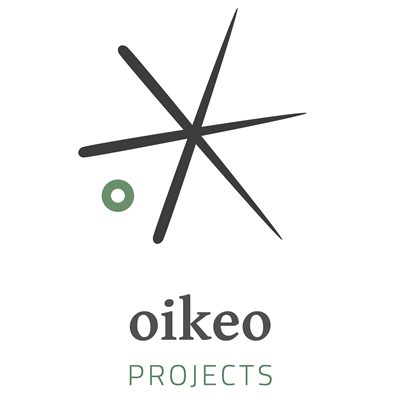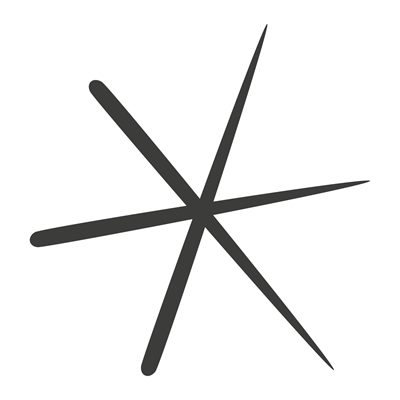

03.06.2019
Der April bringt für uns in Laos nicht nur ein neues Jahr (laotisches Neujahr), sondern auch nochmals einen besonderen Besuch: Simons Eltern trotzen dem Smog und den Kübeln voller Wasser und wir verbringen eine schöne Zeit zusammen.
April ist die Zeit der “Burning Season”: Bauern in ganz Südostasien brennen ihre Felder ab, um diese für die nächste Pflanz-Saison vorzubereiten. Diese alte Tradition bringt aber äusserst unangenehme Umstände mit sich: Über Wochen ist die Luft trüb, an manchen Tagen kommt die Sonne kaum durch und die Smogwerte gehen durch die Decke, die Leute klagen über Hals- und Kopfschmerzen. Besonders schlimm ist es dieses Jahr im Norden Thailands. Genau dort, wo Simons Eltern durchreisen. So kürzen sie ihre Zeit ab und kommen etwas früher nach Luang Prabang als ursprünglich geplant.
So haben wir genügend Zeit miteinander, um die Stadt und umliegende Attraktionen zu besichtigen. Kuang Si Wasserfall, Phousi Mountain, verschiedene Märkte, das Papier- und Weberdorf – es gibt so viel zu sehen dass uns nicht langweilig wird. Dazwischen gibt’s laotischen Kaffee am Mekong und natürlich kommt auch die lokale Kulinarik nicht zu kurz. Besonders wichtig für sie ist es auch, unseren Alltag hier mitzuerleben. Zu sehen, wo wir wohnen und arbeiten und mit wem wir unsere Zeit hier verbringen hilft, ein besseres Bild zu haben, wo wir hier so abgeblieben sind.
Und dann erleben wir zusammen das wohl verrückteste Fest im laotischen Jahreskalender: das Laotische Neujahr. Als Josephine einige Tage vor Beginn des offiziellen Festes erstmals auf dem Fahrrad von einem Kübel Wasser erwischt wird, wissen wir: Jetzt geht es los. Ab dann ist man ab Mittag nicht mehr sicher und sollte besser alle Wertsachen in wasserfesten Tüten verpackt haben, denn Ausnahmen gibt es keine. Grüppchenweise stehen Jugendliche und Kinder am Strassenrand, teilweise nur mit einer Wasserpistole, teilweise mit dem Schlauch oder aber mit einem grossen Fass, von dem kübelweise Wasser geschöpft und auf die vorbeigehenden-/fahrenden Leute geworfen werden. Dabei – wie bei jedem laotischen Fest – darf natürlich die laute Musik nicht fehlen, die aus allen Lautsprechern dröhnt. Zu Spitzenzeiten verwandeln sich die Hauptstrassen zu ausgelassenen, wilden Wasserschlachten, bei denen kein Fleck trocken bleibt. Gut, dass es so heiss ist! So macht einem die Nässe nichts aus. Bis zum Tag 3 finden wir das ganze auch ziemlich lustig, danach hat man es auch mal gesehen und sehnt sich wieder danach, etwas unkomplizierter in die Stadt gehen zu können, ohne immer gleich völlig durchnässt zu sein. Hier ein kleiner Einblick in die Strassen Luang Prabangs während Pi Mai:
April brings not only a new year in Laos (Lao New Year), but also another special visit: Simon's parents defy the smog and the buckets full of water and we spend a great time together.
April is the time of the “Burning Season”: Farmers across Southeast Asia burn their fields to prepare them for the next planting season. However, this old tradition causes extremely unpleasant circumstances: the air is cloudy for weeks, on some days the sun hardly comes through and the smog levels spike, people complain of sore throats and headaches. It is particularly bad this year in northern Thailand - which is exactly where Simon's parents travel through. So they shorten their stay and come to Luang Prabang a little earlier than originally planned.
Like this, we have enough time together to visit the city and surrounding attractions. Kuang Si waterfall, Phousi Mountain, various markets, the paper and weaving village - there is so much to see that we don't get bored. And of course, there is Lao coffee on the Mekong and also the rest of the local cuisine is not neglected. It is also particularly important for them to experience our everyday life here. To see where we live and work and with whom we spend our time here, to have a better picture of our life here.
And then we experience what is probably the craziest festival in the Lao annual calendar together: the Lao New Year. When Josephine is showered with a bucket of water for the first time on her way home on the bicycle a few days before the start of the official festival, we know: Now it's beginning. From then on, we are no longer safe and it is better to have all valuables packed in waterproof bags, because no one is spared. Adolescents and children stand in groups on the side of the road, sometimes only with a water pistol, sometimes with a hose or with a large barrel, from which buckets of water are scooped up and thrown at the people walking by. As with any Lao festival, the loud music that is booming from all speakers is omnipresent. At peak times, the main streets turn into a wild, crazy water battle with no spot remaining dry. The good thing is that it's so hot! So getting wet doesn't matter so much. Until day 3 we find the whole thing pretty funny, after that we have seen it and long to be able to go into the city a little more easily, without always being completely soaked. Here is a little insight into the streets of Luang Prabang during Pi Mai:
Das Laotische Neujahr ist aber bei Weitem nicht nur ein Spassfest. Es ist tief verwurzelt in der buddhistischen Tradition des Landes. Offiziell dauert es drei Tage: der erste Tag ist der letzte des alten Jahres, der zweite Tag ist ein Zwischentag, der zu keinem Jahr gehört, der dritte Tag markiert den ersten Tag des neuen Jahres. Das Wasser hat – wie bereits beschrieben – dabei eine spezielle Rolle. Am letzten Tag des Jahres werden alle Häuser geputzt und auch in den Tempeln ist die Reinigung ein wichtiges Ritual. Auch die Mönche sowie alle Buddhastatuen eines Wats (Tempels) werden zur Reinigung und als Segen mit parfümiertem Wasser begossen, um das neue Jahr zu beginnen.
Begleitet werden die Festivitäten auch mit diversen Umzügen durch die Stadt. Gestartet wird mit der Elefantenprozession, bei der geschmückte Elefanten durch die Strassen ziehen. Bei weiteren Prozessionen werden die wichtigste Buddhastatue (Phra Bang) vom Nationalmuseum zum Tempel getragen, begleitet von Tänzen, unter anderem von “Grossmutter und Grossvater Nyeu”, Figuren, die die Ahnen aller Laoten darstellen sollen. Zu allem drauf wird auch noch die Miss Lao gekürt. Das Feiern findet (fast) kein Ende! Auch zu den Prozessionen hier einen kleinen Einblick:
The Lao New Year is by no means just a fun festival. It is deeply rooted in the country's Buddhist traditions. Officially, it takes three days: the first day is the last of the old year, the second day is an intermediate day that does not belong to any year, the third day marks the first day of the new year. As already described, the water has a special role. All houses are cleaned on the last day of the year and cleaning is also an important ritual in the temples. The monks as well as all Buddha statues of the wats (temples) are purified with scented water for cleansing and as a blessing to start the new year.
The festivities are also accompanied by various parades through the city. It starts with the elephant procession, in which decorated elephants roam the streets. In further processions, the most important Buddha statue (Phra Bang) is carried from the National Museum to the temple, accompanied by dances, among others by “grandmother and grandfather Nyeu”, figures that are supposed to represent the ancestors of all Lao People. On top of that, Miss Lao is crowned. The celebrations have (almost) no end! Also a little insight into the processions:
Die Zeit vergeht wie im Flug. Als Abschied unternehmen wir eine Mekongfahrt auf einem kleinen Boot, um die Stadt nochmals vom Fluss aus zu sehen. Wir freuen uns immer, Besuch zu haben und unser Leben hier ein Stück weit teilen zu können. Dies macht es uns auch stets wieder bewusst, wie gerne wir hier sind und wie sehr wir unser Leben hier geniessen.
Das Wiedersehen wird aber nicht lange auf sich warten lassen. Unsere Flüge für einen Besuch in der Schweiz sind gebucht und so werden wir Ende August nach 2 Jahren erstmals wieder Zeit mit Familie und Freunden in der Schweiz verbringen (3 Wochen). Wir freuen uns und sind gespannt auf den Kulturschock! :-)
Time flies. As a farewell we take a Mekong cruise on a small boat to see the city again from the river. We are always happy to have visitors and to be able to share our lives here to some extent. This always makes us aware of how happy we are here and how much we enjoy our life here.
The next reunion will not be too far out. Our flights for a visit to Switzerland are booked and so we will spend time with family and friends in Switzerland for the first time after 2 years at the end of August (3 weeks). We are looking forward to the culture shock! :-)
